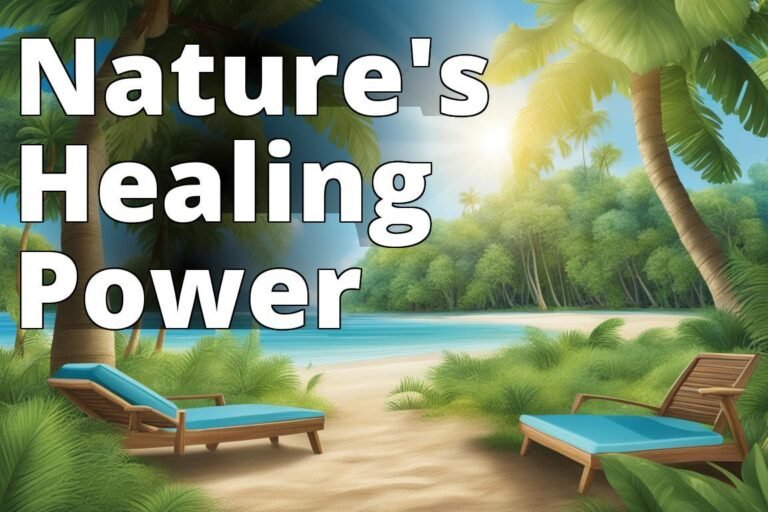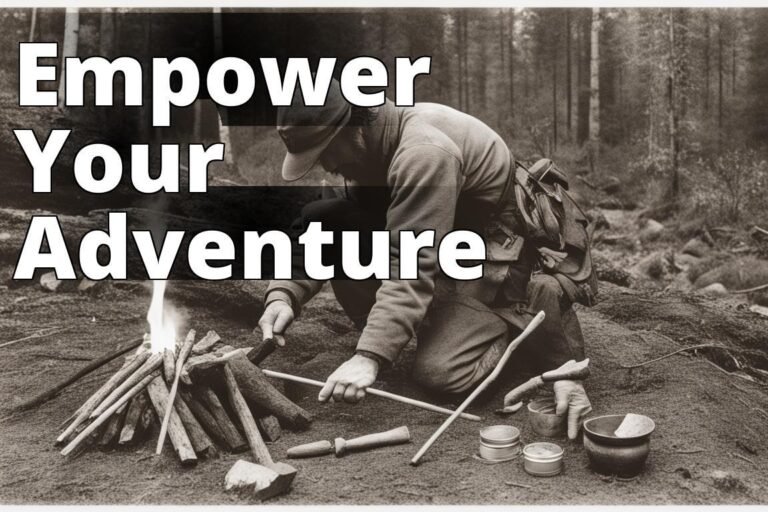How To Survive Lost in the wilderness Guide

Bushcraft 101 and knowing how to survive several days lost in the wilderness could mean the difference between a tale of triumph or tragedy. This survival guide strips down survival to its bones, giving you actionable strategies for making it through unexpected backcountry emergencies.
To survive being lost in the wilderness you’ll need to understand how to kick-start your mental toughness, craft life-saving shelters from scratch, find water in a pinch—and that’s just the beginning. By understanding these essentials of wilderness savvy, not only can you stay safe but also signal effectively for aid when all tech fails.
Always keep learning. Advanced skills like setting traps or reading nature’s signs are all vital knowledge before venturing into remote areas. Ready? Let’s dive deep into staying alive out there.
Lost in The Wild: Keys to Surviving
You’re deep in the woods, and your compass might as well be a fidget spinner because you’ve just realized you have no idea where you are. First things first, don’t panic like it’s Black Friday and they just ran out of TVs. Remember Geraldine Largay? She survived 26 days lost in Maine’s backcountry because she kept her cool when it mattered most.
Mentally Prepare
A positive mindset isn’t just for yoga class—it can save your life out here. When faced with wilderness survival, staying calm is your best friend (sorry, Wilson). It lets you make clear decisions instead of running around like a headless chicken—which only makes search teams’ job harder.

In sports, the greatest coaches all know it’s 90% prep, 10% physical. This is no different. Train yourself to handle stress by practicing scenarios at home—like using chopsticks to pick up beans during an earthquake drill or turning off Netflix halfway through binge-watching (tough love). Think it through from when things go sideways, next steps, and what the ultimate goal is, to survive.
You wouldn’t leave for Mars without telling NASA; don’t go into the wild without leaving bail-out directions either. A contingency plan scribbled on napkin won’t cut it though—you need details like phone numbers and emergency service contacts pinned on someone’s fridge who knows how often you get sidetracked by shiny rocks or interesting bugs. And make sure it’s someone who actually wants to see you again, not just your landlord or the neighbor you waved at two years ago after first moving in.
Tell Friends and Family Your Plan
Don’t just tell Aunt Edna, ensure you have multiple people in the know and continually update whoever is keeping tabs on you. If you realize you’ll be a day early, let them know. A little late, pull out that flip phone and make it happen. Studies show that novices often lack map reading skills; just imagine how hard it’ll be after three days of eating only energy bars and morning dew. Give those people all they need—a route map complete with nearby landmarks (so they can brag about their adventurous relative) and expected check-in times—and watch them become your lifeline from civilization.
Realizing Your Lost: Now What?
Oh, so you’ve taken a wrong turn and now you’re part of the ‘Lost Person Club.’ Welcome. The first thing to do is not freak out. Remember Geraldine Largay? She survived 26 days because she kept her cool. Panic is like that friend who eats all your snacks but never brings any—totally unhelpful.
Use the “STOP” Method
Your brain might be running faster than a squirrel on an espresso shot, but it’s time to hit the brakes with a nifty little trick called “STOP.” This isn’t just some cute acronym; it stands for Stop, Think, Observe, Plan. It’s like putting together IKEA furniture—you need instructions unless you want something wobbly.
- Stop: Don’t move another inch. Stay calm by taking deep breaths or counting tree limbs if that’s what floats your boat.
- Think: What would Bear Grylls do? Okay maybe don’t drink urine yet (never actually), but seriously think about your next steps before bounding off into parts unknown.
- Observe: Identify landmarks and take stock of water sources around you—a babbling brook beats licking morning dew off leaves any day.
- Plan: Craft a basic contingency plan using those bits of knowledge stuffed in the back of your mind from watching survival shows. Walking downhill often leads to civilization—or at least closer to cell phone towers—and follow signs like flowing waterways as they can lead to rescue teams quicker than shouting into the void will.

Remember – staying alive out here isn’t rocket science; it’s about preparing, keeping a cool head, and steadfast patience.
Emergency Shelters from Nature
So, you’ve decided to take a stroll off the beaten path and now Mother Nature’s throwing you a curveball. Time to get crafty with what she offers because building an impromptu pad is on today’s unplanned agenda.
Snow caves? They’re not just for bears. When it feels like Jack Frost is nipping at more than your nose, stay warm by sculpting nature’s version of an igloo. Start by finding yourself some deep snow—ideally away from any potential avalanche zones (because really, who needs that kind of drama?). Pack the snow as if you’re aiming for Fort Knox security; compacted walls are key here. Carve out your cozy hideaway ensuring the entrance dips lower than your sleeping platform—that way cold air stays where it belongs: not cuddling next to you.

If getting lost in winter wonderlands isn’t quite your style but natural shelter still calls your name when sunshine turns rainforest into monsoon season—a makeshift shelter will be right up your alley. Look around; those tree limbs are practically begging to become part of something greater. Create a simple frame and let pine needles or leaves do their thing covering it up like nature’s own blanket fort against whatever weather conditions decide to gatecrash.
Find Food With Traps and Foraging
So you’re in the middle of nowhere, your stomach’s rumbling like a grizzly bear, and the only drive-thru is hundreds of miles away. Time to channel your inner MacGyver because those berries over there might just be your lunch—if they don’t kill you first.
Hunting, Trapping, and Foraging Basics
Finding food requires channeling inner caveman – setting traps using tree limbs, crafting fishing rigs akin to DIY projects from the Stone Age. But watch out. Not all berries got the memo ‘eat me’; some rather play the part of poisonous villains straight out of fairy tale nightmares. So unless your goal is to become Sleeping Beauty, stick to known edibles.
You don’t need to be a seasoned hunter with an arsenal at hand to catch some wilderness fast food. All it takes are some survival skills, patience, and resourcefulness. First off, let’s talk traps—because unless you can run as fast as a rabbit (spoiler alert: you can’t), running after one won’t end well for anyone but Mr. Bunny.
To start trapping small game successfully without ending up empty-handed or worse—snared by your own trap—you’ll want simple yet effective contraptions like snares made from paracord or wire. Sure, it’s possible you could stumble upon some while being lost hiking through what seems like Middle-earth, but paracord bracelets and belts have become almost a fashion statement lately and serve a dual purpose for those traveling the outdoors. We recommend carrying something along these lines with you at all times when out on the trail.
The trick here is understanding animal habits; place these bad boys along known trails or near burrows where little critters love hanging out. Remember though, it’s not about setting up an obstacle course for them—it’s more ‘come into my parlour’ said the spider…but less creepy.
Types of Traps You can Setup
1. Snare Trap
- Description: A snare trap consists of a noose made from wire, string, or cord that tightens around the animal’s neck or limb as it moves through the snare, trapping it.
- Ideal for: Rabbits, squirrels, and other small mammals.
- Placement: Along animal trails or near burrows.

2. Deadfall Trap
- Description: This trap uses a heavy weight, like a rock or log, that falls and crushes the animal when it disturbs a trigger mechanism.
- Ideal for: Small mammals and birds.
- Placement: On flat ground where small game is known to forage, baited with food.

3. Pitfall Trap
- Description: A pitfall trap is a deep hole dug in the ground, covered with branches and leaves to camouflage it. Animals fall into the pit and cannot escape.
- Ideal for: Larger animals, but can be sized down for small game.
- Placement: On animal paths or near water sources.
This sophisticated trap uses a trigger mechanism made from three sticks arranged to resemble the number “4”, with a heavy weight such as a large rock or log balanced on top. The trap is camouflaged within the forest floor using natural surroundings like leaves and twigs, and baited with food to attract small animals. A small animal, like a squirrel or a rabbit, is shown cautiously approaching the trap, illustrating the trap’s sensitivity and effectiveness without the animal being caught.

4. Bird Lime Trap
- Description: This trap uses a sticky substance applied on branches to catch birds. The birds land on the treated surfaces and get stuck.
- Ideal for: Small birds.
- Placement: In trees or bushes where birds are likely to perch.
5. Spring Snare Trap
- Description: Utilizes a sapling’s tension combined with a trigger and a noose. When the animal moves the bait, it releases the tension, causing the sapling to spring up and lift the animal off the ground.
- Ideal for: Small to medium-sized game.
- Placement: On game trails or near water sources, baited with food.
This type of trap uses a heavy weight balanced on a trigger mechanism. When an animal disturbs the trigger by taking the bait, the weight falls, trapping the animal beneath it. The setup is camouflaged with natural surroundings to blend in with the forest floor, making it an effective method for survival situations where capturing small game for food is necessary.
Foraging For Food
If traps aren’t doing the trick—or if they make you feel too much like Jigsaw playing games in nature—it’s time we talk forging strategies beyond munching on pine needles (they’re better suited for decorating than dining).
Finding edible plants doesn’t require a PhD in botany; sometimes it’s all about following our fuzzy friends’ lead—watch where birds peck or squirrels snack—but keep in mind Mother Nature isn’t always user-friendly so double-checking with something like a local flora guide for the area you’ll be in before popping anything into your mouth could save you from becoming plant poison poster child 2024.
Let’s not forget that scavenging mother earth’s pantry—foraging—isn’t just wandering around picking daisies hoping they turn into spaghetti somehow. No, it involves getting down and dirty literally digging roots tubers and finding those juicy worms fish would kill which, surprise-surprise makes excellent protein snacks for us land-dwellers too.
- Pack mental images of wild edibles and avoid taste-testing unknown greens. Or it may be the most unforgettable culinary adventure you wish you never had.
- Get to know the seasonal cycles and figure out when’s the best time to harvest certain foods, like leafy greens in spring.
Using Nature to Filter Water
A clear mountain stream may look like nature’s Brita filter, but don’t let appearances fool you; that water needs some serious TLC before becoming drinking material. To start your own episode of ‘Survivor: Backyard Edition,’ gather sand, charcoal from your last campfire (or snagged from Mr. Bear Grillz himself), and rocks—your tiny filtration dream team.
Sand acts like a jealous ex—it catches all those particles trying to slide into your clean water DMs. Charcoal is the unsung hero here; its porous surface absorbs contaminants faster than a sponge at an oil spill convention while improving taste—and who doesn’t want their wild-caught H2O tasting like liquid heaven?
Last up are rocks—they’re not just for stubbing toes anymore. They add pre-filtration clout by blocking larger debris faster than bouncers at an exclusive club entrance.
Nature might throw you curveballs when locating water sources, so use common sense sharper than grandma’s wit at Thanksgiving dinner—if animals are giving that puddle side-eye or plants around it have seen better days…steer clear.
Water Filtration Techniques
You’ve MacGyvered together Mother Nature’s version of a Brita—but wait. Don’t sip on that survival cocktail yet. Iodine tablets are small but mighty warriors against invisible beasties lurking in your agua purificada—and they’re easier to pack than any guilt trip mom ever gave you about moving out.
You can’t sip directly from Mother Nature’s teacup without expecting some surprises—and I don’t mean the fun kind at parties. If boiling water isn’t on tonight’s menu due to lack of pot or firewood regrets, go old school with sand, charcoal, and rocks filtration systems. This DIY project won’t win any design awards but hey—it’ll make murky water less “mystery flavor” and more life-saving hydration station.
Bonus tip: No iodine tablets in that survival kit we all hope we packed? Let morning dew quench that thirst—or better yet, collect rainwater.
The wild doesn’t care if this was supposed to be day one or ten—if you find yourself playing castaway without signing up for it remember these tips could help turn ‘lost’ into ‘living room chic’, wilderness edition.
If iodine sounds too much like science class trauma resurfacing or if fish-tasting-water isn’t quite what you had envisioned for this wilderness getaway, boiling is another surefire way to nuke those germs back into oblivion without adding flavors reminiscent of aquarium escapades. Remember though: chugging scalding hot water will ruin more than just marshmallow roasts—you’ve been warned.
No need for desperation moves like sipping morning dew off grass blades. And please—for everyone’s sake—forget “Bear Grylls’ special lemonade”. Stick to safe, proven methods of hydration. Drinking urine can introduce harmful substances back into your system and does more harm than good. So let’s focus on finding clean water sources instead.
Signaling Basics
Sure, your cell phone is great for cat videos and midnight snack orders, but out in the wild you’re more likely to find a bear than a working Wi-Fi signal? That’s when old-school signaling methods become your new BFFs.
Using Mirrors and Reflective Items To Signal Aircraft
The sun’s got its uses beyond giving you that sweet tan—like saving your lost behind with some shiny objects. Got a mirror or any reflective item? Angle it right against the sunlight and aim those beams at passing search planes or helicopters like an SOS disco ball.
Now let’s get real: unless there’s an impromptu dance party up above, pilots aren’t looking for flash mobs—they’re scanning for signals of life. Studies show whistles can travel far on wind currents—even better than yelling. So if they hear something resembling humanity, they’ll come checking.
Best and Cheapest Signal Mirrors on Amazon!
Natural Flair With Bright Clothing
You might think neon went out of style after the 80s—but boy does it shine when catching eyes from above. If fashion wasn’t exactly a big concern when packing your survival kit, here’s hoping you accidentally grabbed bright and colorful, and hopefully reflective.
Bright clothing doubles as an effective locator beacon among nature’s greens and browns. Stick that eye-sore fabric high on tree limbs —it’ll help catch rescuers’ attention faster than free samples at Costco.
Signs For Universal Distress Signals
We all know three of anything screams “help”—three fires, three rocks lined up, it’s universal distress. The trick is making these signals big enough to be seen from higher altitudes.
Create clearings by arranging logs or rocks into triangles—the wilderness equivalent of waving down cabs—and place them somewhere open like meadows near tree lines where contrast plays in our favor.
Forget your phone in the wild; instead, shine with mirrors and reflective items to signal aircraft, dress in neon for visibility, and use classic three-sign distress signals to grab rescuers’ attention from above.
Multi-Tools
Gone are the days when your backpack looked like a yard sale on your back. Space is precious, weight is heavy, and frankly, there’s no room for one-trick ponies in wilderness gear. That’s why multi-functional tools should be at the top of your list. Imagine having a knife tool that not only slices through rope but also helps spark up that wood stove with its built-in fire starter—now we’re cooking.
Emergency Mylar Thermal Blankets, Designed for NASA

- BULK MYLAR EMERGENCY BLANKETS – Advanced dual-sided aluminized mylar blankets in Silver color.
- BULK SAVINGS – Our same top-performing individually wrapped blankets, in bulk savings quantities.
- LIGHTWEIGHT AND DURABLE – Military-grade 12-micron aluminized polyethylene mylar, 52″x82″ & 2 oz.
- EMERGENCY USE – Designed to retain up 90% of your body heat, completely block rain, snow, moisture.
First Aid Kits
Your first aid kit should make an ER nurse nod approvingly. Antiseptic wipes? Check. Bandages in various sizes because who knows what tree limb you’ll wrestle next? Double check. Tweezers—for those unexpected splinters or tick guests—absolutely essential. And let’s talk about prevention: infection doesn’t stand a chance if you’ve got antibiotic ointment ready to rumble at the first sign of trouble.
Emergency Blankets
The great outdoors might offer fresh air galore but don’t forget—it comes with free-of-charge weather conditions too. Now imagine this: temperatures plummet quicker than stock prices during recession—you’ll thank every deity known to mankind for packing that emergency blanket which keeps body heat tighter than tourists clutching their fanny packs.
Navigating Nature
Ever found yourself strolling too far from the trail and suddenly, you’re playing hide-and-seek with civilization? If that’s a yes, knowing how to use environmental cues is your golden ticket back. For instance, tree lines are not just nature’s pretty patterns—they’re like breadcrumbs leading Hansel and Gretel home.
If you spot waterways, follow them downhill. Odds are they’ll take you on a scenic route right into town—or at least closer to human life than where your misadventure began. Just remember this little tidbit: it works because settlements naturally pop up near water for all those fun things like drinking and fishing—not just picturesque views for Instagram.
But let’s get real; sometimes we need more than H20 to find our way out of Mother Nature’s maze. That’s when identifying landmarks comes in handy. Moss growth on trees can give away cardinal directions—north side usually means more moss due to less direct sunlight—and who knew algae could be so informative?
Recognizing Natural Navigation Signs
You don’t have to be an eagle scout to read nature’s signs; some basics will do the trick just fine. Nearby landmarks such as distinctively shaped mountains or uniquely twisted trees serve as natural compass points guiding us through unfamiliar areas.
Moss aside, another pro tip is looking for man-made structures—even if it’s something simple like a fence line or power pole—as these often lead somewhere important (or at least somewhere with cell phone reception). And speaking of phones, always jot down local emergency services’ numbers before heading out—it beats yelling ‘Help.’ into the void when you’re lost in the great outdoors.
Additional natural structures that make great guide posts:
- Ledges overlooking valleys: Perfect spots for catching glimpses of distant towns or roads.
- Creeks converging into rivers: These might lead directly toward populated areas since humans love settling by waterfronts—who doesn’t want that view?
- Ridges running parallel with valleys below: They generally indicate human activity isn’t far off since we tend not only to seek out these landscapes for their natural resources but also because they often make ideal locations for trails and roads. The presence of these geological features can serve as a reliable clue that civilization might just be over the next rise.
Conserving Energy With Rest Periods
Busting out moves like Bear Grylls might sound cool until fatigue kicks in harder than reality TV drama. Balance is key – move too much, and you’ll be as drained as a cell phone with no tower nearby; stay put excessively, and search teams will have to rename ‘search-and-rescue’ to just ‘rescue’. You need strategic shuteye—rest when the sun’s scorching or during pitch-black nights because even wilderness experts know downtime isn’t wasted time—it’s recharge time.
A sip here saves a gallon later—that’s how smart hikers drink water without turning into desiccated mummies under direct sunlight. Don’t pass up on snowmelt or rainwater collected in leafy cups; every drop counts when lost person flyers start circulating at ranger stations.
If hunger pangs hit hard enough that tree bark starts looking tasty (spoiler alert: don’t eat it), remind yourself food food isn’t always found-food but rather earned through ingenuity—a fishing rig from twigs can land more than compliments from woodland creatures.
Last but definitely not least—the first aid kit that doubles as an anti-apocalypse pouch comes clutch when cuts threaten infection risks faster than horror movie plot twists unfold. Emergency blankets aren’t glam camping accessories—they’re body heat VIP passes for one-way trips away from hypothermia central. No need for fancy synthetic materials either since pine needles make excellent insulation just the same.
Keep Learning and Grow Your Skills
If you think watching survival shows makes you Bear Grylls, then getting lost in the wilderness will be a rude awakening. Let’s face it, knowing how to fashion a fishing rig from your shoelaces or set up traps that would make MacGyver proud are skills that take time and practice to master. These aren’t just cool party tricks; they’re life-saving techniques.
Primitive Fishing
Sure, catching fish with your bare hands sounds fun until you actually try it and end up fishless and frustrated. Learning primitive fishing methods before hitting the backcountry is smart because when push comes to shove—and by ‘push’ I mean hunger—you’ll need more than luck on your side. So grab some line, improvise a hook, and remember: patience is not just a virtue but also a necessity when dinner depends on it.
Hunting Basics: Theory VS Practice
While Hollywood has us believing we can all throw together an elaborate trap out of twigs in minutes—in the real world—it ain’t happening without practice. Take time now to learn hunting skills for small game using snares made from natural materials found around any campsite. You don’t want your first attempt at snare-setting to look like amateur hour as squirrels mockingly hop over them.
Navigating Without Tech
Understanding land features becomes crucial for finding one’s way back home after taking that wrong turn while chasing butterflies—or was it deer?
Your best bet? Learn how waterways typically flow towards civilization or how moss indicates North before heading into terrain steep enough for goats to say “Nope.” Also note landmarks such as tree lines which might lead toward rescue squad territory.
Rescue Signals Without Tech
We’ve all seen movies where someone starts fires so big they get billed for forest damage later—but let’s aim smaller (and legal). A simple mirror for reflecting sunlight can signal aircraft overhead better than shouting “I’M HERE!” till hoarse—a tactic especially effective since search teams use both eyesight and technology during their sweeps. With the right angle, a mirror flash can be seen for miles, grabbing attention when you need it most.
Conclusion
Mastering how to survive 10 days being lost in the wilderness starts with your mind. Stay calm, stay positive. Make sure you’ve got a solid plan before stepping out into the unknown.
Gather knowledge on crafting shelters and sourcing water; these skills are life-saving. Remember, small game traps can mean dinner, while signaling for help is your lifeline.
Pack smartly—your survival kit is crucial. Use nature’s clues to find your way back if needed. And always conserve energy—you’ll need it when rescue comes knocking.
In the end, remember that staying safe in wild terrain isn’t just about what you carry but also what you know and how clearly you think under pressure.










